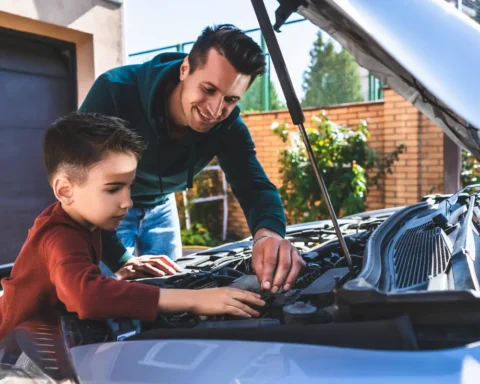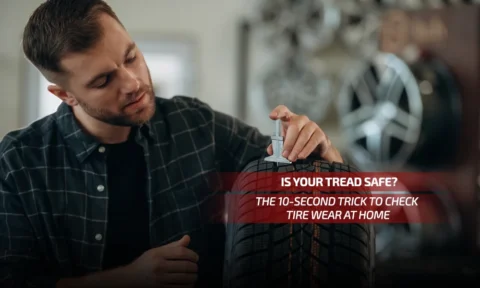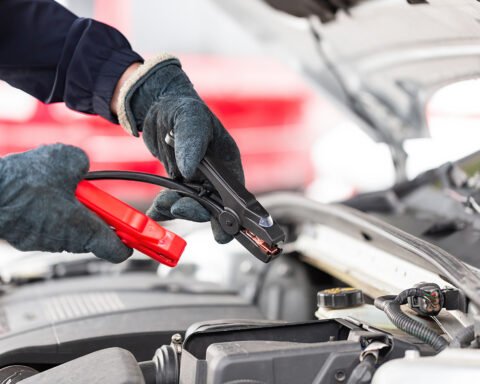No matter how experienced you are as a driver, the road is filled with unpredictable hazards that can pose risks to your car’s safety. From sudden obstacles to harsh weather conditions, these hazards can cause accidents, vehicle damage, or even life-threatening situations if you’re not prepared. Knowing how to identify and safeguard against these common road hazards will help keep you and your car safe. Here are five road hazards to watch out for and tips on how to protect your vehicle from them.
Potholes
Potholes are one of the most common and damaging road hazards. These uneven surfaces can cause significant damage to your tires, suspension, and alignment. Hitting a pothole at high speeds may even result in a flat tire or bent wheel rim.
How to Safeguard Your Car:
Stay Alert: Keep your eyes on the road to spot potholes in advance, especially after rain or during winter when they are more common.
Maintain Proper Tire Pressure: Properly inflated tires are better equipped to absorb the impact of potholes. Check your tire pressure regularly to ensure it’s at the recommended level.
Slow Down: If you see a pothole ahead and can’t avoid it, reduce your speed to minimize the impact on your car.
Wet or Icy Roads
Wet roads due to rain or icy roads in colder months can drastically reduce your car’s traction, making it harder to control your vehicle. This increases the risk of hydroplaning, skidding, or sliding.
How to Safeguard Your Car:
Check Your Tires: Ensure your tires have adequate tread depth for better grip in slippery conditions. Consider investing in winter tires if you live in areas with heavy snow and ice.
Drive Cautiously: Reduce your speed on wet or icy roads and increase the distance between your car and the vehicle ahead to give yourself more stopping time.
Use Your Lights: In rainy or snowy conditions, always turn on your headlights to improve visibility for both you and other drivers.
Debris on the Road
Road debris, such as rocks, branches, or items that have fallen off trucks, can cause sudden damage to your car. Driving over or hitting debris at high speeds can damage your tires, undercarriage, or windshield.
How to Safeguard Your Car:
Maintain a Safe Following Distance: This gives you more time to react if the vehicle in front suddenly swerves to avoid debris.
Stay in the Center Lane: On multi-lane highways, debris is more likely to accumulate near the edges of the road. Driving in the center lane can help you avoid these hazards.
Inspect Your Windshield: After encountering small debris, check your windshield for cracks or chips, as these can worsen over time.
Animals Crossing the Road
Animal crossings, especially in rural areas, pose a significant hazard. Hitting an animal can cause severe damage to your car and put your safety at risk. Deer, in particular, are involved in thousands of vehicle collisions each year, often resulting in serious accidents.
How to Safeguard Your Car:
Be Vigilant at Dusk and Dawn: These are the peak times for animal movement. Use your high beams when driving on rural or dark roads to spot animals in advance.
Slow Down in High-Risk Areas: Be especially cautious when driving through areas marked with animal crossing signs or near forests and fields.
Brake, Don’t Swerve: If an animal suddenly crosses your path, brake firmly but avoid swerving, which could cause you to lose control or collide with another vehicle.
Construction Zones
Construction zones are filled with road hazards like uneven pavement, loose gravel, narrow lanes, and unexpected detours. Not only can these hazards damage your vehicle, but they can also lead to accidents if you’re not careful.
How to Safeguard Your Car:
Obey Construction Zone Signs: Always follow posted speed limits and warning signs in construction areas. The slower pace gives you more time to react to sudden changes in road conditions.
Avoid Loose Gravel: Driving over loose gravel can damage your car’s paint or windshield. If you can’t avoid it, slow down to prevent rocks from flying up and causing damage.
Stay in Your Lane: Narrow lanes can be tricky to navigate, especially when surrounded by construction barriers. Keep a steady pace and stay centered in your lane to avoid accidents.
Road hazards are inevitable, but by staying alert and taking proactive steps to protect your car, you can minimize the risk of damage or accidents. Potholes, wet roads, debris, animals, and construction zones each present unique challenges that require you to adjust your driving habits. Regular vehicle maintenance, cautious driving, and being prepared for unexpected road conditions will not only protect your car but also ensure a safer driving experience for you and your passengers.
When you’re behind the wheel, remember: it’s always better to be safe than sorry. By being mindful of these common road hazards, you can safeguard your car and stay one step ahead of potential danger.






